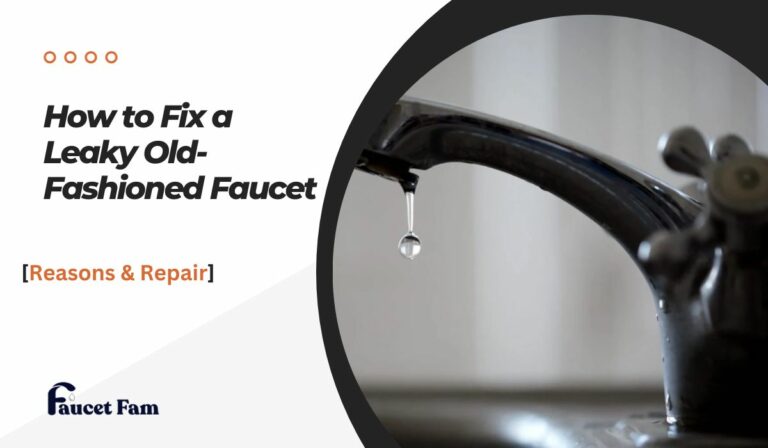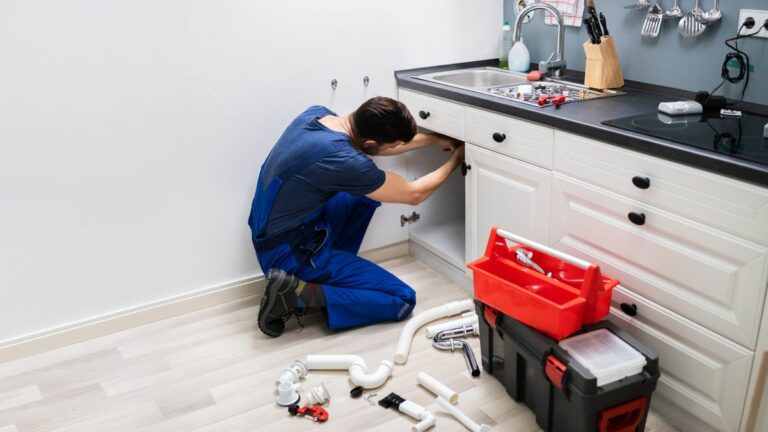Do Kitchen Faucets Have Flow Restrictors?
You may not know it, but kitchen faucets have intricate construction. They generally come with multiple small parts that work together to make the water flow through the head. On that note of flow, do kitchen faucets have flow restrictors?
All kitchen faucets are required to have flow restrictors. This standard comes from the EPA (Environmental Protection Agency) and has been in effect since 1994. It is mainly to conserve water and a step to save the environment.
But does that mean that all the brands follow the law? Also, how should you remove the flow restrictor from your kitchen faucet? Well, you can learn all about the topic by diving a bit further into this discussion.
What Is a Flow Restrictor in a Kitchen Faucet?
Before getting into the details, you need to understand the core mechanics of the flow restrictor. As the name suggests, its main task is restricting the water flow. Since 1994, EPA has limited the flow to anywhere from 2.2 GPM and 2.5 GPM.

Any faucet that does not have a flow rate within that range is not following the EPA standard. And that would make them not get the “EPA-certified” tag.
Now, while it may sound good not to have the flow restricted, you need to note that the restrictor plays other roles too. For example –
Prevents Leakage
Anything can go wrong within the water pipes of your home. For example, the water pressure may suddenly increase due to an issue from the source.
But with the flow restrictor in place, you will get a consistent water flow regardless of the internal pressure increase within the pipes. This eventually prevents accidental leakage, saving you from the hassle of fixing the water in the kitchen sink.
Reduces the Wear and Tear
A sudden increase in water pressure can put severe pressure on the small parts of the faucet. But as the restrictor keeps the flow in check, it can lower the chances of your kitchen faucet becoming damaged too early.
Lowers Water Bill
It goes without saying that the flow restrictor is there to help you save on water bills too. When the water flow is smooth and right, you are likely to use the right amount of water to do all the chores.
Do All Kitchen Faucet Brands Have Flow Restrictors?
Since using a flow restrictor has become a standard in the faucet industry, all brands follow it. To be exact, if you are using a faucet that came out after 1994, it has a flow restrictor inside. So, does that mean you can’t buy a faucet without a flow restrictor?
It would be hard to find a kitchen faucet launched before 1994 in the market. Moreover, as you know, faucet flow restrictors do not just reduce the flow. It also helps to lower the regular wear and tear.
That eventually extends the lifespan of the faucet and keeps the customers happy. And customer satisfaction is one of the factors that kitchen faucet brands shoot for. So, not integrating a flow restrictor does not make much sense to them.
But can a kitchen faucet function without a flow restrictor? In short, yes, it can! However, you will not have a good experience with that specific faucet as the water pressure can sometimes get exceedingly high.
How Do You Remove the Flow Restrictor of a Kitchen Faucet?
So, the flow restrictor of your kitchen faucet has holes in it. Over the course of time, these holes can get filled up with sediment and mineral deposits. And that is when you will get a much lower water pressure than before.

Although the best possible remedy here is to clean the flow restrictor, you may not want to go through the hassle. In that case, you can remove it entirely. Here are the steps –
1. Check whether your faucet has a flow restrictor
In spite of the fact that all kitchen faucets are required to come with a flow restrictor, your one might not. Even though the chances of that are low, some brands can skip it to save manufacturing costs.
For that reason, you need to inspect your faucet before moving forward. But how to check if your kitchen faucet has a flow restrictor?
Look through the end of the faucet. Can you see a screen across the head? If so, your kitchen faucet has a flow restrictor.
2. Turn the water shut-off valve off
One of the safety precautions you need to take in this process is turning the shut-off valve off. This will prevent you from accidentally turning the handle of the faucet and getting yourself drenched.
3. Plug the sink
Another safety precaution is to plug the sink. As mentioned earlier, there are many small parts inside the kitchen faucet. They can fall off during the removal process and get into the drain. To avoid that from happening, you should plug the sink.
4. Remove the aerator
You will need to remove the aerator to get to the flow restrictor. But before you grab a plier and remove it, you should cover the joints with painter’s tape. This tape will protect the finish on the aerator and prevent you from damaging it.
With the tape in place, grab the aerator with the pair of pliers and turn counterclockwise. Keep turning until it is loose enough to be removed by hand. Then hold the aerator with your fingers and twist it counterclockwise to get it off.
5. Dismantle the aerator to remove the flow restrictor
The flow restrictor should be right within the aerator. You just need to pull apart the parts of the aerator to get to it. In case you are wondering, the flow restrictor is a disc between the aerator screen and the rubber washer.
Remove that disc and put the aerator back in place. Make sure to correctly tighten it on the faucet head. Once that’s done, unplug the sink and turn the water shut-off valve on. You should now get a higher water pressure from the faucet.
How to Clean the Water Flow Restrictor of Kitchen Faucets?
As mentioned before, cleaning the water flow restrictor is the best move when you are noticing reduced water pressure. And it’s not like you will need to go through too many steps to clean it. See it for yourself –
1. Remove the aerator
You should first turn the water shut-off valve and plug in the sink. Then, get a pair of pliers and put some painter’s tape on the jaws. Grab the aerator with the pliers and turn it counterclockwise.
2. Disassemble the aerator and soak it in vinegar
Put some vinegar into a bowl. Disassemble all the parts of the aerator and put them inside the bowl. Leave them soaked overnight. That said, if you are in a hurry, you can take them out after a couple of hours.
3. Rinse the parts and install the aerator back in place
After getting them out of the vinegar bowl, you need to rinse the pieces. This will clear out all the residues and loose sediments still lodged in the holes. After rinsing, put the aerator back in one piece and install it onto the faucet head.
Final Words
So, do kitchen faucets have flow restrictors? The short answer would be yes. All the faucet manufacturers have been required to integrate this crucial part into their faucets since 1994. But you can definitely find cheap faucets without it.
As discussed earlier, the best way to ensure your faucet has it is to look through the head. If you can see a screen, your kitchen faucet has a flow restrictor. Alternatively, you can review the manual to see whether the faucet has it.



![What Is an Open Vent Faucet? [Top 3 Benefits]](https://faucetfam.com/wp-content/uploads/2023/01/What-Is-an-Open-Vent-Faucet-768x432.jpg)
![Kitchen Faucet Stuck on Spray Mode [Causes and Solutions]](https://faucetfam.com/wp-content/uploads/2023/02/kitchen-faucet-stuck-on-spray-mode-768x432.jpg)


![What Are the Parts of a Faucet? [7 Crucial Components]](https://faucetfam.com/wp-content/uploads/2023/01/What-Are-the-Parts-of-a-Faucet-768x432.jpg)